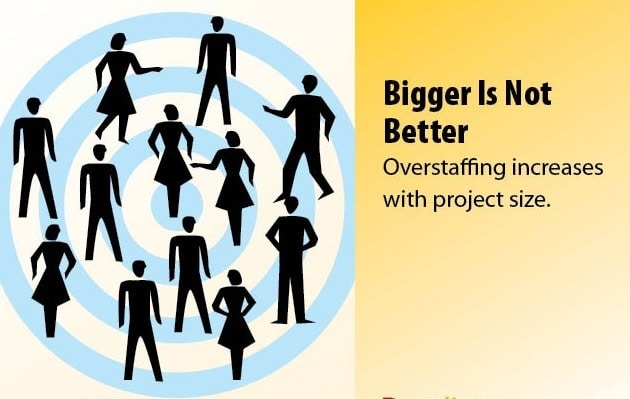When an economy worsens, and organizations are unable to meet their expenses or become less productive, most of them result in laying off their staff to make profits and remain competitive against rival organizations in the industry. This process is what is referred to as downsizing. While these events are detrimental to the employees who are retrenched, it’s advantageous to the business, since the organization will be able to recover and remain competitive.
Table of Contents
Here are some of the advantages of downsizing to an organization.
1) Reduced costs
Downsizing reduces expenses. The costs are usually reduced due to the reduced payrolls as a result of the employees who have been laid off and the overall reduction of the staff overheads. Other than laying off employees, some organizations lay off some managers to reduce the layers of hierarchy in the firm. This way, the organization can save on salary expenses which can eventually be used to improve the operations and productivity of the company at the given moment.
In other cases, the downsizing involves shutting down other locations that do not bring in substantial revenue to the organization. In this case, the assets in this area are often sold off to reduce operations and maintenance costs.
Downsizing also gives the management an opportunity to evaluate areas that are more productive and therefore focus more on these sectors while cutting on down in the less productive areas. If the organization has been preceding its core values and mission, downsizing gives it an opportunity of re-evaluating its priorities.
2) Responsiveness and improved employee motivation
A change in the culture of employees in a positive manner is among the significant advantages of downsizing organizations experience. Although workers often lose morale during the restructuring period as no one is sure to retain their job, if the organization renews its focus on the employees, this leads to increased satisfaction and appreciation leading to increased loyalty and team work towards gaining the organization’s goals and realizing its objectives.
As time passes, the employees gain a new appreciation for having a job in a business that laid off some employees and thus increasing teamwork, motivation and eventually productivity among the employees who remain.
3) Movement of authority and power
In a flat hierarchy, layers of management are often removed to stay with only a few management experts who can cost-effectively handle the business operations.
With the loss of most managers during the downsizing period, an organization’s management can access the skills and competencies of the remaining employees. By accessing the productivity of each worker, the organization can determine the different abilities of employees and thus promote those found to be more productive to senior positions within the firm.
This practice improves organizational performance as authority and power is now where the real action is, with frontline employees.
4) Improved communication
Another benefit of a flat hierarchy in an organization chart is an increase in coordination and improved communications. Since there are fewer departments and a short hierarchy, information is better relayed. The fact that the managerial offices are close to each other allows for more efficiency in communicating messages.
Often, an extended hierarchy doesn’t always perform well when it comes to relaying and receiving communications. This is because the long line of departments creates more room for mistakes during communication and something will always get lost in translation. If there are fewer departments in an organization, messages will more efficiently be passed on and the information passed will also be more accurate, so to speak.
The benefit of effective communication is that it will eliminate any delays in decision making by managers and the executive. This eventually allows policies to be implemented faster as mentioned earlier allowing for the organization’s operations to run smoothly.
5) Better decision making
Less bureaucracy and easier decision making are also one among the advantages of downsizing in an organization.
With fewer hoops in decision-making processes, a flat hierarchy is left with fewer people that need to be consulted about a decision, allowing the organization’s management to provide immediate responses to issues raised by employees or concerns about the organization.
Generally, a flat hierarchy creates a direct link in communication from the executive offices, managerial offices, and the employees.
6) Better utilization of technology
When operations cost rise and profits decrease, organizations are always forced to take measures that will benefit the organization even if it means hurting some employees in the process. One such measure is often to downsize. Well, this article has talked much about this but just to emphasize on it, downsizing should not always be seen as a selfish move especially by employees, but rather a move to save the business so that it can continue to provide employment opportunities to more people in future.The advantages of downsizing are that it allows companies to cut costs and improve efficiency, contributing to a “leaner and meaner” organization.
Now back to the main point, during downsizing, most organizations tend to fall on the use of technology to better manage their operations and pass communications. This move improves productivity as well reduces costs. Moreover, it keeps organizations up to date with emerging trends in the industry.
Summary
Like many other things, downsizing and a flat hierarchy have its pros and cons. As management, you have to factor in all possibilities including the advantages of downsizing and it disadvantages before deciding on a direction to take. You need to realize that some activities within your organizations’ value chain are more critical for a successful strategy than others.
There are two things to remember when downsizing, first, you need to design an organizational structure around those critical activities in the value chain. The second consideration is to design the structure so that it helps coordinate and integrate the support activities to maximize the support of strategy-critical primary activities in the organization’s value chain and does so in a way to minimize the cost for support activities.
Nevertheless, you should clarify your visions for the organization. If you do this, flattening your hierarchy may well improve the efficiency and productivity of your organization.
Liked this post? Check out the complete series on Human resources


